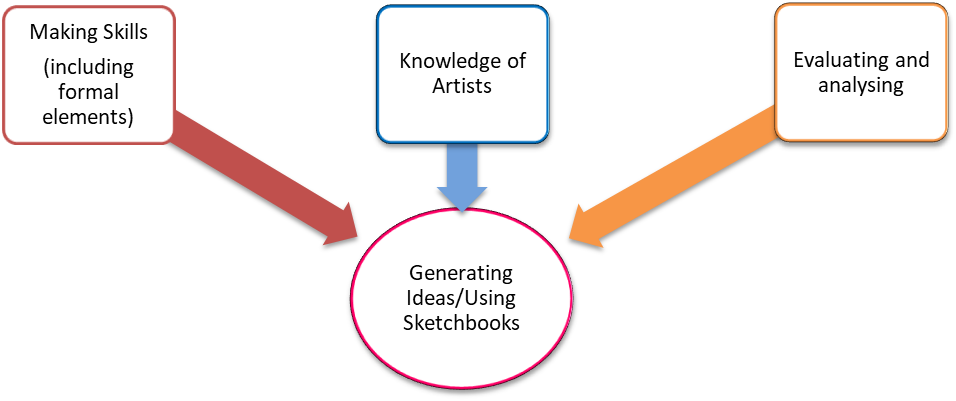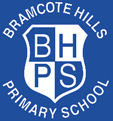BHPS Art Curriculum
Aims
The national curriculum for art and design aims to ensure that all pupils:
- produce creative work, exploring their ideas and recording their experiences.
- become proficient in drawing, painting, sculpture and other art, craft and design techniques.
- evaluate and analyse creative works using the language of art, craft and design.
- know about great artists, craft makers and designers, and understand the historical and cultural development of their art forms.
Implementation
At BHPS we provide children with a challenging and engaging Art and Design curriculum that develops creativity, sets challenges, engages, and inspires children and equips them with the conceptual and procedural knowledge they need to experiment, invent and create their own works of art, craft, and design. The curriculum is designed to allow pupils to further their understanding of Art and Design, in order to explore and investigate, create and evaluate artwork as set out in the national curriculum. It enables pupils to create artwork with a real purpose, encouraging the display and sharing of work created and showcasing the skills and progress made.
Throughout their study, the children will acquire and develop the conceptual and procedural knowledge that has been identified within each component of learning and across each year group. Conceptual knowledge is taught in sequences that build on prior learning. Procedural knowledge is a golden thread that runs throughout the units and is, itself, carefully sequenced and matched, wherever possible, to the appropriate conceptual knowledge.
School recognises the distinction between conceptual and procedural knowledge. Conceptual knowledge being the facts, rules and principles and the relationships between them. It can be described as ‘knowing that’. In contrast procedural knowledge is knowledge of methods or processes that can be performed. It can be described as ‘knowing how’.
Conceptual Knowledge |
|
Procedural Knowledge |
|
Practical |
Theoretical |
|
Procedural |
|
In order to make art with increasing proficiency, pupils need to develop practical knowledge in the following areas:
In the Kapow Primary curriculum, this knowledge largely links to our Making skills strand. |
Children gain knowledge of the history of art through the Knowledge of Artists strand.
They consider the meanings and interpretations behind works of art that they study and explore artists’ materials and processes. |
|
Disciplinary knowledge refers to the procedural knowledge children acquire to help them understand the subject as a discipline. Pupils learn how art is studied, discussed and judged, considering our big questions: What is art? Why do people make art? How do people talk about art?
In Kapow, the strand Evaluating and analysing covers this procedural knowledge. |
|
The three domains of knowledge and the interplay between them, enable pupils to generate ideas and use sketchbooks to develop their own artistic identity. |

Key Primary Themes have been identified to enable children to contextualise, link and understand conceptual knowledge.
Pupils are given every opportunity to develop their ability, nurture their talent and interests, express ideas and thoughts about the world, as well as learning about art and artists across cultures and through history.
Pupils are also taught about the contributions that artists have made and continue to make, to the world they live in.
Artist focus: Learning begins with a brief story or interesting fact about an artis, whose work exemplifies one or more formal element of art.
Artwork Analysis: Pupils are encouraged to identify and talk about the formal elements of art within an artist’s work, before presenting and discussing the elements within their own work.
Imitative Creation: After discussing an artist, pupils create their own artwork inspired by them.
Sketchbooks: Pupils reflect on elements they have used or observed in art around them, including information about how the artist studied applies the formal elements of art within their artwork.
Gallery: Following the completion of an artist study, pupils exhibit a finished product within a whole school art gallery, which is showcased to their peers and where possible, the wider school community.
Implementation
Our art and design curriculum provides a clear and comprehensive scheme of work that is based on the Kapow Curriculum. It is sequential, allowing pupils to build their conceptual and procedural knowledge, applying them in a range of ways. Our art and design curriculum is designed to allow children time to think, discuss, practise, explore and embed. This allows time for teaching, practice and repetition – both in a year group and across key stages. Curriculum coverage is sequenced carefully from EYFS to Year 6 which allows key primary themes, conceptual and procedural knowledge to be developed and revisited at a deeper level of learning.
The formal elements, a key part of the national curriculum, are woven throughout the components of learning. Children are given an opportunity to present their sense of vision through observation, experimentation, and illustration. Pupils are encouraged to use their imagination through a wide variety of media and manipulative skills are developed as well as an awareness of colour, texture, design and dimension. Because the children will have access to conceptual knowledge, language and meanings, they will be able to apply this to their work in Art and Design and across the wider curriculum. There will be, where applicable, links to develop the children’s learning experiences. Key primary themes, conceptual and procedural knowledge are revisited with increasing complexity in a spiral curriculum model. This allows pupils to revise and build on their previous learning. Components of learning allow for procedural knowledge to be developed through practical activities, which encourage experimental and exploratory learning with pupils using sketchbooks to document their ideas.
Lessons seek to introduce new conceptual knowledge and concepts in small, logical steps, in line with cognitive load theory. Children’s knowledge will be built up gradually, making links, wherever possible, to previous knowledge and other areas of learning. We seek to further children’s ability to commit new learning to long term memory by assessing their retention and revisiting key knowledge. Potential misconceptions will be addressed through carefully selected lesson content and effective feedback.
Impact
The art curriculum is designed in such a way that pupils are involved in evaluation, dialogue and decision making about the quality of their outcomes and the improvements they need to make. This means that pupils not only know key knowledge and information about art but are able to talk confidently about their own learning journey and have a growing understanding of how to improve. The impact of our art teaching can be constantly monitored through both formative and summative assessment opportunities, such as low-stakes tests/quizzes, rapid recall opportunities, varied activities and an opportunity to share they knowledge of key vocabulary. Pupil outcomes from each focused activity within a lesson can be used formatively to consider next steps for the class or individual, and/or summatively to inform summaries for the next class teacher or for parents.
Pupils should leave BHPS equipped with the requisite skills and knowledge to succeed in key stage 3 art and design. They should be equipped with a range of techniques and the confidence and creativity to form a strong foundation for their art and design learning at Key Stage 3 and beyond
The expected impact of following the Art Depth Map is that children will:
- Pupils will have clear enjoyment and confidence in art that they will then apply to other areas of the curriculum
- Pupils will understand what being an ‘artist’ means
- Pupils will ultimately know more, remember more and understand more about art
- Produce creative work, exploring and recording their ideas and experiences
- Be proficient in drawing, painting, sculpture and other art, craft and design techniques
- Evaluate and analyse creative work using subject-specific language
- Know about a n umber of focus artists and historical and cultural development of their artwork.
- Demonstrate knowledge when using tools or skills in other areas of the curriculum and in enrichment opportunities both in and out of school
- Meet end of key stage expectations outlined in the national curriculum for art and design
